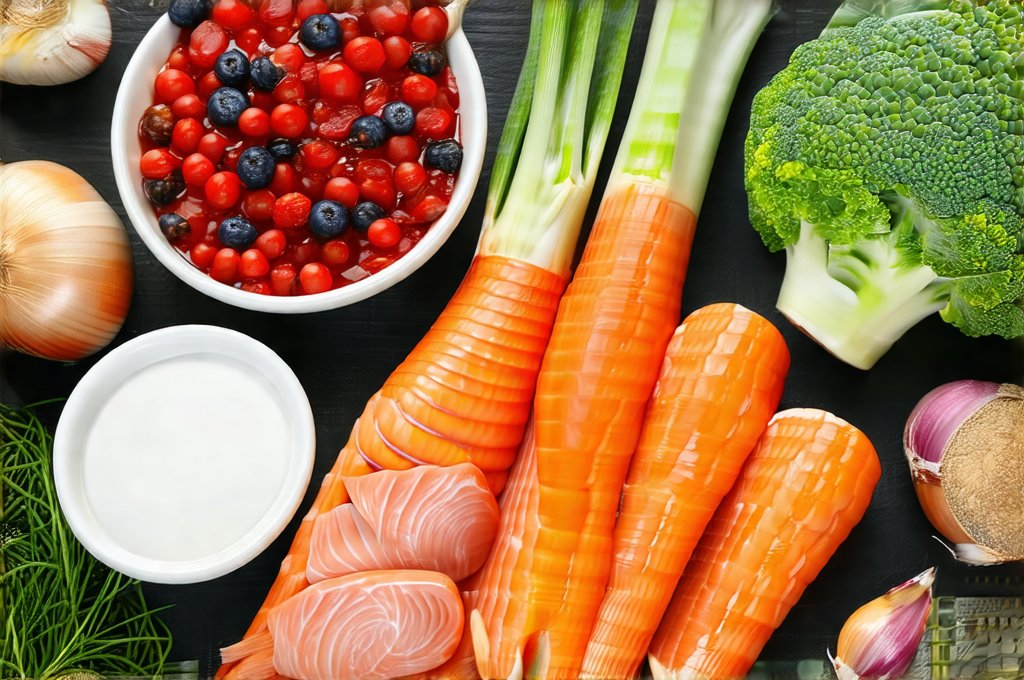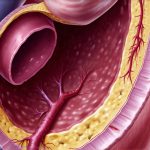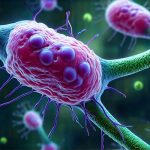Inflammation is often viewed as a negative process, but it’s actually a vital part of our immune system’s response to injury or infection. It signals that something is amiss, prompting the body to heal. However, when inflammation becomes chronic – lingering for weeks, months, or even years – it can contribute to a host of health problems, from digestive issues and autoimmune diseases to heart disease and certain types of cancer. A significant portion of chronic inflammation originates in the gut, making gut health central to overall wellbeing. Many modern dietary habits inadvertently promote inflammation, while others actively combat it. This is where an anti-inflammatory diet comes into play – not as a quick fix, but as a sustainable lifestyle approach focused on nourishing your body and calming systemic inflammation.
The gut lining acts as a critical barrier between the digestive tract and the rest of the body. When this barrier becomes compromised—often referred to as “leaky gut”—undigested food particles, toxins, and bacteria can escape into the bloodstream, triggering an immune response and escalating inflammation. Repairing this gut lining requires more than just eliminating inflammatory foods; it demands a proactive approach focused on providing the building blocks for healing and supporting a diverse microbiome – the trillions of microorganisms that live in our digestive system. An anti-inflammatory diet isn’t about deprivation; it’s about abundance, prioritizing nutrient-dense whole foods while minimizing those known to fuel inflammation. It is about understanding the intricate connection between what we eat and how we feel.
Understanding the Anti-Inflammatory Approach
The core principle behind an anti-inflammatory diet revolves around reducing consumption of foods that promote inflammation and increasing intake of those that actively combat it. This isn’t a one-size-fits-all approach, as individual sensitivities can vary, but certain food groups consistently contribute to either positive or negative inflammatory responses. Highly processed foods, refined sugars, unhealthy fats (trans fats and excessive omega-6 fatty acids), and conventional red meat are generally pro-inflammatory. Conversely, foods rich in antioxidants, healthy fats (omega-3s), fiber, and phytonutrients – like fruits, vegetables, whole grains, lean proteins, and fermented foods – have potent anti-inflammatory properties. Focusing on whole, unprocessed foods is the foundation of this dietary pattern.
A key aspect is recognizing the impact of food sensitivities. What might be a healthy choice for one person could trigger inflammation in another. Common culprits include gluten, dairy, soy, corn, and nightshades (tomatoes, peppers, eggplant, potatoes). Identifying and temporarily eliminating these foods—an elimination diet guided by a healthcare professional—can help pinpoint potential triggers and allow the gut lining to heal. It’s not necessarily about permanent avoidance but understanding how your body responds to different foods. Beyond food choices, hydration is paramount; adequate water intake supports digestion, nutrient absorption, and detoxification – all crucial for reducing inflammation. Combining probiotics with these dietary changes can further improve bloating and gut regularity.
Building an Anti-Inflammatory Plate
Constructing a balanced anti-inflammatory plate involves strategically incorporating the aforementioned beneficial food groups. Aim for at least half of your plate to be filled with colorful non-starchy vegetables like leafy greens (spinach, kale), broccoli, carrots, and bell peppers. These are packed with vitamins, minerals, and antioxidants that neutralize free radicals and reduce oxidative stress. A quarter of your plate should consist of lean protein sources such as fish (salmon, tuna – rich in omega-3s), poultry, beans, lentils, or tofu. The remaining quarter can be dedicated to complex carbohydrates like quinoa, brown rice, sweet potatoes, or oats—choosing whole grains over refined options is crucial for minimizing inflammation.
Healthy fats are also integral. Incorporate sources of monounsaturated and polyunsaturated fats like avocados, olive oil, nuts (walnuts, almonds), seeds (chia, flaxseed), and fatty fish. These fats help modulate the immune response and support cell membrane health. Furthermore, don’t underestimate the power of spices! Turmeric (containing curcumin – a potent anti-inflammatory compound), ginger, garlic, cinnamon, and rosemary are all powerful additions to your meals. Finally, consider incorporating fermented foods like yogurt (with live cultures), kefir, sauerkraut, kimchi, or kombucha to support gut microbiome diversity. A thriving microbiome is essential for immune regulation and reducing inflammation. Top tests https://vitagastro.com/top-tests-for-tracking-gut-repair-after-illness/ are available for tracking your gut repair after illness.
Foods to Embrace
- Fatty Fish: Salmon, mackerel, tuna, sardines – rich in omega-3 fatty acids
- Berries: Blueberries, strawberries, raspberries – packed with antioxidants
- Leafy Greens: Spinach, kale, collard greens – nutrient powerhouses
- Nuts & Seeds: Walnuts, chia seeds, flaxseeds – healthy fats and fiber
- Olive Oil: Extra virgin olive oil – monounsaturated fats and anti-inflammatory compounds
- Turmeric: Contains curcumin, a powerful anti-inflammatory agent. Consider pairing with black pepper to enhance absorption.
- Ginger: Another potent anti-inflammatory spice.
Foods to Limit or Avoid
- Processed Foods: Fast food, packaged snacks, sugary cereals – high in inflammatory ingredients.
- Refined Sugars: Soda, candy, baked goods – contribute to inflammation and gut dysbiosis.
- Unhealthy Fats: Trans fats (found in some processed foods), excessive omega-6 fatty acids – promote inflammation.
- Conventional Red Meat: Limit intake due to its potential inflammatory effects. Choose grass-fed options if consuming.
- Gluten & Dairy: Potential triggers for individuals with sensitivities. Consider elimination diets guided by a healthcare professional.
- Artificial Sweeteners: Can disrupt gut microbiome and contribute to inflammation.
Implementing an Elimination Diet
An elimination diet is a short-term dietary strategy used to identify food sensitivities that may be contributing to inflammation or other health issues. It involves removing potential trigger foods for a period of time (typically 2–3 weeks) and then systematically reintroducing them one at a time while monitoring symptoms. This process requires discipline and careful observation, but it can provide valuable insights into your body’s unique sensitivities.
- Remove: Eliminate common inflammatory foods like gluten, dairy, soy, corn, nightshades, eggs, nuts, and alcohol for 2-3 weeks.
- Observe: Pay close attention to any changes in symptoms such as bloating, gas, fatigue, skin rashes, or joint pain. Keep a food diary to track what you eat and how you feel.
- Reintroduce: After the elimination phase, slowly reintroduce one food at a time every 3-4 days, observing for any adverse reactions. Start with small amounts and gradually increase the portion size.
- Record: Document your response to each reintroduced food. If you experience symptoms, remove that food from your diet again and try another one later. It’s important to work with a healthcare professional during this process.
This careful approach can help identify foods that are causing inflammation and allow you to make informed dietary choices. It’s not about eliminating these foods forever but understanding how they affect your body and adjusting your diet accordingly. Remember, the goal is to support gut healing, reduce inflammation, and enhance overall wellbeing—not to restrict unnecessarily. Understanding what an anti-inflammatory diet looks like can also benefit those with reflux. And if you are traveling, remember how to plan for gut healing. Finally, consider whether grains are necessary for your individual gut repair. Be mindful of potential low-enzyme diet risks.


















